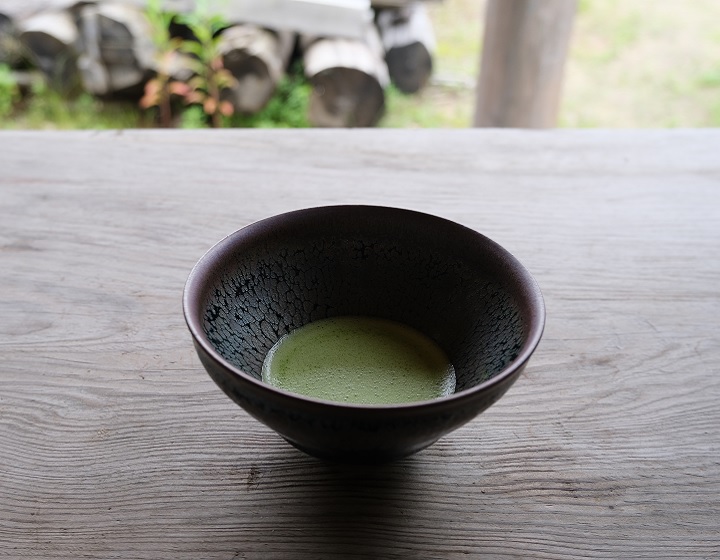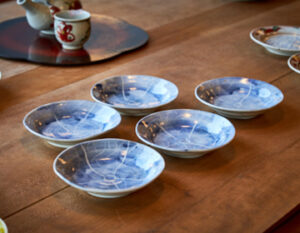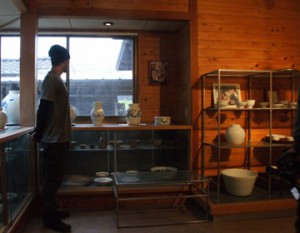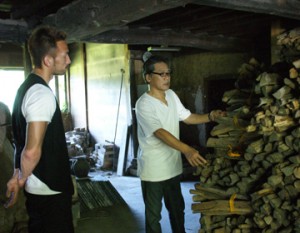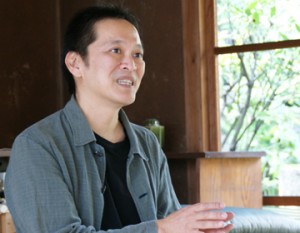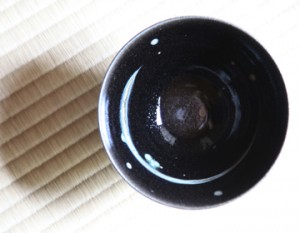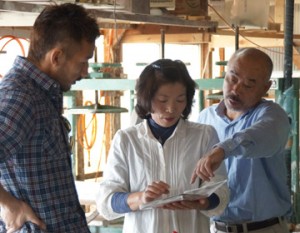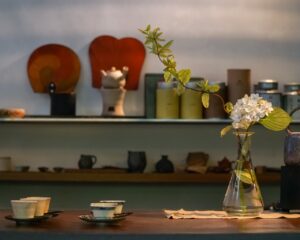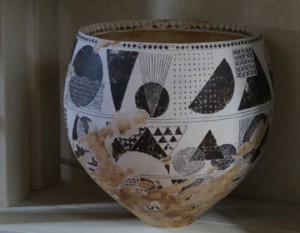The “tenmoku” pottery is a type of pottery with sparkling silver flecks floating on a jet-black background. The mysterious beauty of this type of pottery has been called a “copy of the universe,” and it has attracted many historical figures and potters, including Oda Nobunaga. Noriyuki Furutani, one of the contemporary tenmoku artists, dares to use a wood-fired kiln and continues to challenge new expressions of tenmoku, while many artists use electric or gas kilns that can easily control the temperature.
Wood flames create works of art beyond imagination.
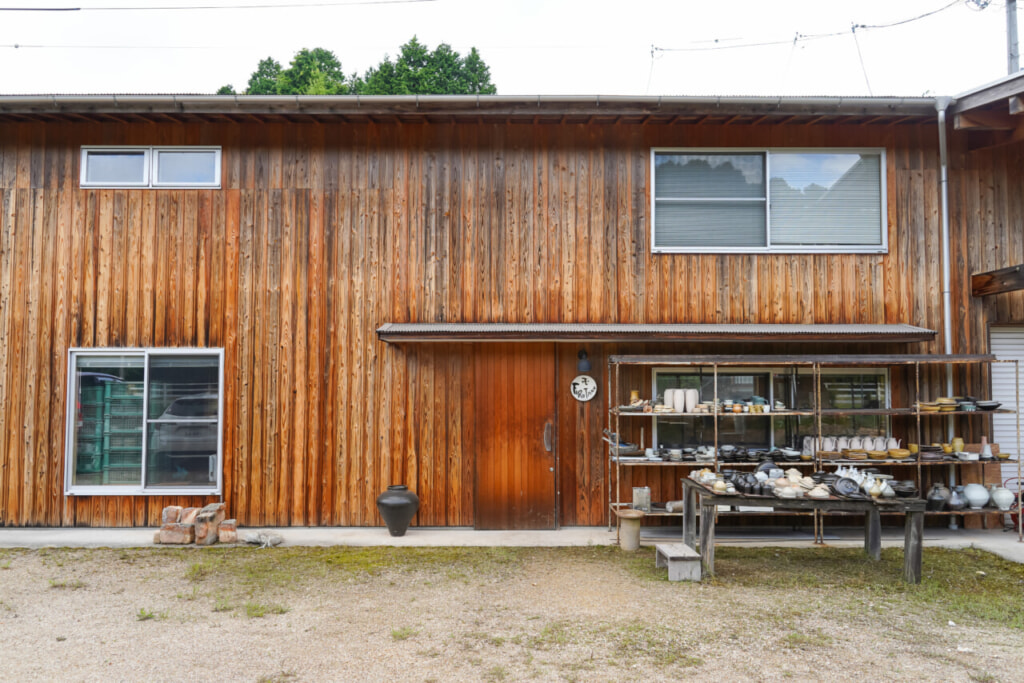
Mr. Furuya’s studio is located in Shigaraki Town, Shiga Prefecture. Shigaraki is known for the tanuki pottery often seen on the eaves of local taverns, and is one of the six oldest kilns in Japan.
“It’s getting up to a nice temperature,” Mr. Furuya welcomes us, and we face the “Anagama” kiln with red flames blazing right in front of us.
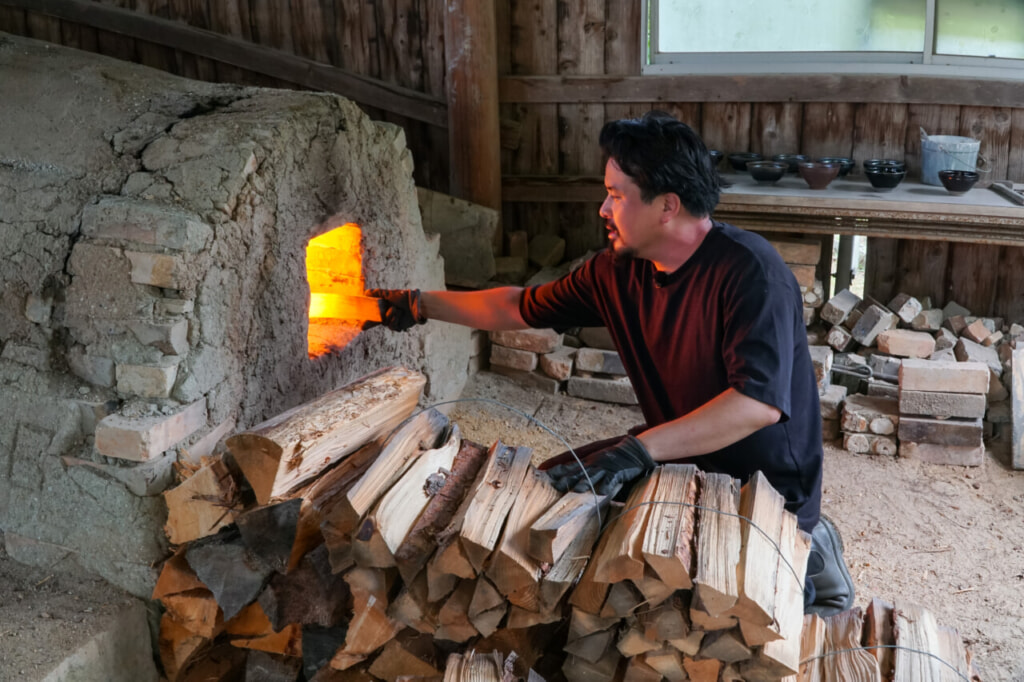
Anagama is a traditional kiln in which wood is heated slowly, and is said to be the oldest style of kiln in Japan, having been introduced from the Korean Peninsula during the Kofun period. While it is difficult to control the temperature and the firing tends to be uneven, the expression of each piece changes depending on how it is exposed to the flame and how the ashes are covered, and no two pieces are alike.
I make tenmoku and daily-use vessels,” he says. Of course, I sometimes use a kerosene kiln or an electric kiln, but I always fire tenmoku in a wood-fired kiln. I feel that firing in a wood-fired kiln makes the black glaze deeper and darker with more presence,” he says. Another major reason he continues to fire with wood is that he never knows what will come out each time he unloads the kiln, and the combination of his control and the power of nature produces pieces that exceed his imagination.
The shock of seeing the national treasure “Aburitate Tenmoku” was unforgettable and led him to the world of Tenmoku.

Mr. Furuya was born the third son of Michio Furuya, a potter who revived the anagama kiln in Shigaraki. He studied design at a local high school, and upon entering college, he began his career as a ceramic artist. It was when he was 18 years old and a university student that he began researching tenmoku, which he says was triggered by his fascination with the national treasure “oil drop tenmoku” he saw at an art museum.
My father was a Shigaraki potter, so I grew up seeing traditional Shigaraki ware. So when I saw tenmoku for the first time, I was shocked and wondered if this kind of pottery existed. It was completely different from the pottery my father made, but I was attracted by the interesting glaze and fell in love with the world of tenmoku.
After graduating from university, he visited pottery production areas throughout Japan to learn various techniques, and now has a studio in Shigaraki, where he continues to study tenmoku while making vessels for daily use.
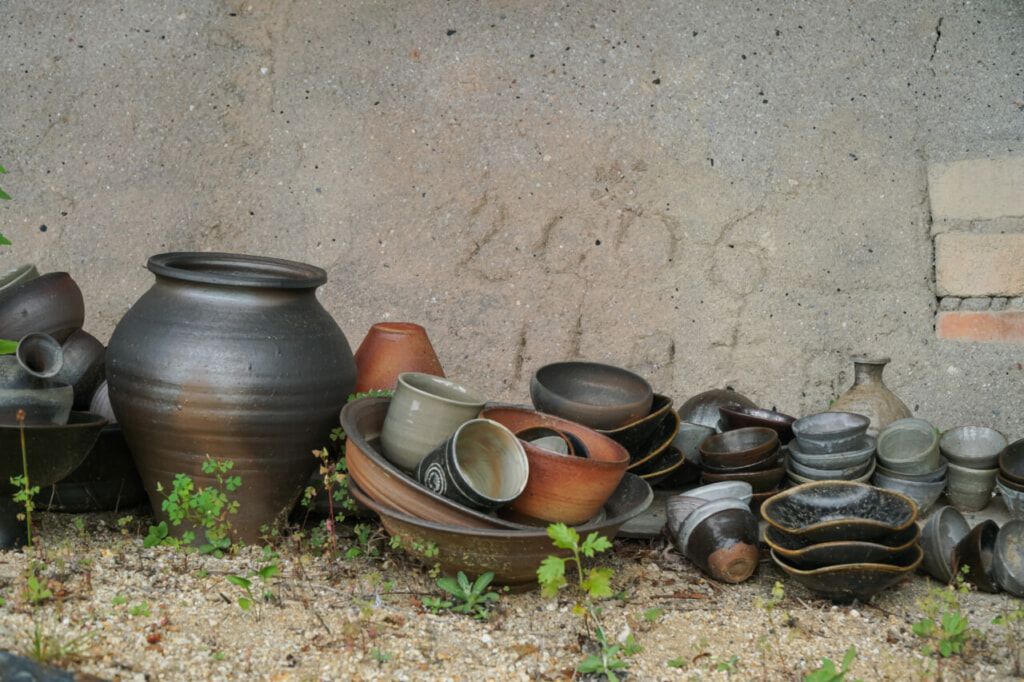
Tenmoku was introduced to Japan during the Kamakura period (1185-1333). It was first introduced to Japan during the Kamakura period (1185-1333), when Japanese Zen monks brought back tea bowls with a black glaze called tenmoku glaze from Tianmu Mountain in China, where tea leaves were produced. At that time, a mortar-shaped tea bowl with a black glaze was called tenmoku, but today, when various types of vessels such as sake cups, tokuri (Japanese rice wine cups), and flower vases are produced, the term tenmoku has come to refer to all pottery with a black glaze. According to the patterns that appear on the bowls, there are different types of tenmoku, such as yohen tenmoku, oil drop tenmoku, and jomoku tenmoku, etc. A legendary book from the Muromachi period describes yohen as the best type of tenmoku, and oil drop as the second best. There are only four Yohhen Tenmoku pieces in existence in the world. All of them are located in Japan, and Tenmoku artists from all over Japan are continuing their research to reproduce this rare type of Tenmoku and to create their own unique expressions.
Research on oil drop tenmoku
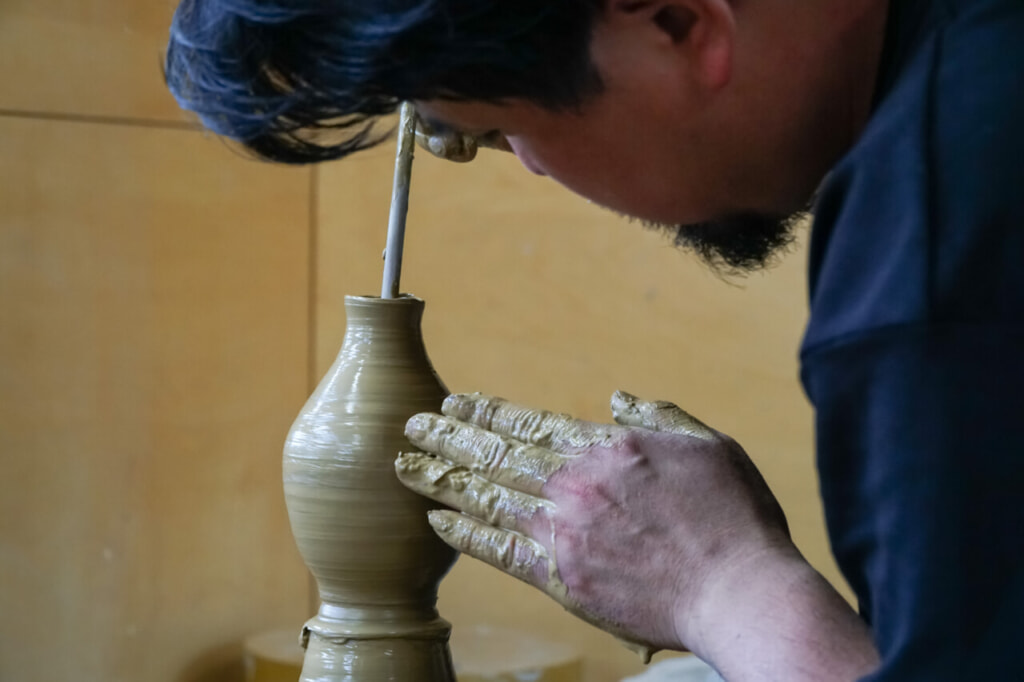
At the same time as researching tenmoku, he also continues to produce tableware for daily use. The tableware that Mr. Furuya makes is characterized by a simple monotone design that is comfortable for daily use. He believes that “a vessel comes alive only when it is used to serve food,” an idea that was greatly influenced by the Karatsu potter Takashi Nakazato.
I was introduced to Mr. Nakazato when he came to Shigaraki as an instructor at the Shigaraki Ceramic Cultural Park, and since he was going to stay for about two months, he said, ‘I’ll be here for a while, so why don’t you practice the potter’s wheel here? To my surprise, Mr. Nakazato started by making tableware to be used during his stay. He made the plates and bowls on the spot and arranged them together with a soy sauce holder and chopstick rests that he had brought with him to create a neat dining table. After that, she was asked, “I’m going to the U.S., would you like to come with me?” He then asked me to come with him on a trip to the U.S., and as we traveled around the world and throughout Japan, we ate together, made dishes together, and learned all kinds of things while sharing food, clothing, and shelter together. We eat and live every day with the tableware we made. We express ourselves with the clay that is there and the kiln that is there. I learned a lot from that experience. While accompanying him, I learned how to use a “gyubira,” which is useful for shaping vessels, and I became less wasteful in turning the potter’s wheel, which greatly increased the speed at which I could make tableware. The generosity and delicate beauty of Furuya’s tableware, which accepts any kind of food, must have been cultivated through this experience.



